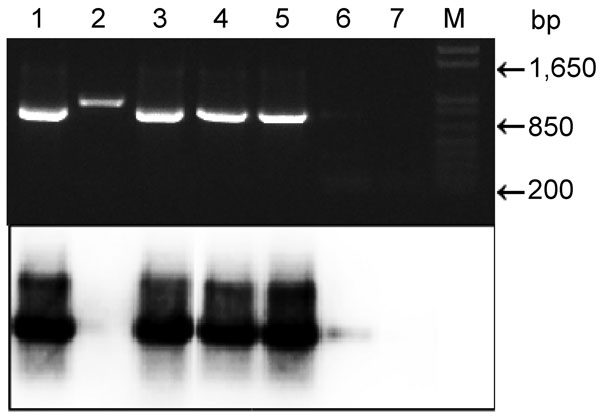Volume 18, Number 4—April 2012
Dispatch
Detection of Plasmodium spp. in Human Feces
Figure

Figure. Top, agarose gel electrophoresis of nested PCR products of human fecal samples amplified with primers (pairs DW2-F + DW2-R and CYTB1-F + CYTB2-R) and stained with ethidium bromide. Bottom, autoradiograph of a Southern blot of the same gel. α-32P-ATP–labeled acytochrome B gene of Plasmodium falciparum was used as a probe. Lanes 1–6, samples from humans with malaria (the infection sample in lane 6 is weak); lane 2, spurious amplicon; lane 7, sample from an uninfected person; lane M, 1-kb molecular mass (Invitrogen, Carlsbad, CA, USA).
1These authors contributed equally to this article.
Page created: March 15, 2012
Page updated: March 15, 2012
Page reviewed: March 15, 2012
The conclusions, findings, and opinions expressed by authors contributing to this journal do not necessarily reflect the official position of the U.S. Department of Health and Human Services, the Public Health Service, the Centers for Disease Control and Prevention, or the authors' affiliated institutions. Use of trade names is for identification only and does not imply endorsement by any of the groups named above.